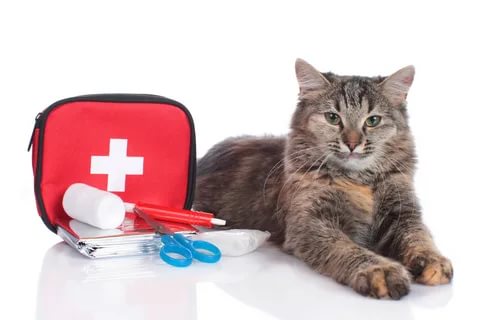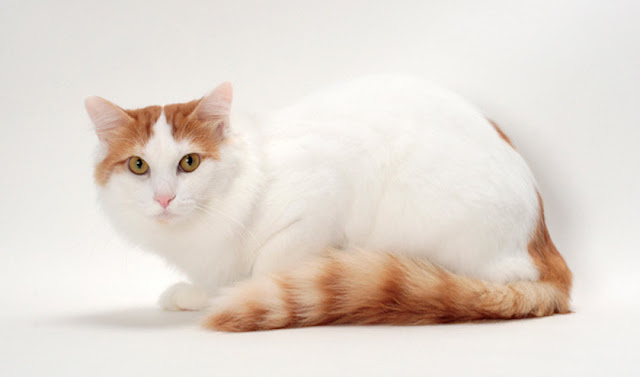Understanding Cat Drooling: What's Normal and When to Seek Help
Drooling in cats can be alarming, but it's not always a serious sign. Here's a practical guide to help you distinguish what's normal and what needs medical advice.
What's Normal?
Mild, intermittent drooling: Especially during play, when a cat sees particularly appetizing food, or while sunbathing.
Short-term drooling: If the drooling subsides within a few minutes or hours, it's usually not a problem.
Source of Spontaneous Drooling: Some cats drool lightly when stimulated or when they have tasty food in their mouths.
What Might Be a Sign of a Problem
If you notice any of the following symptoms along with persistent or excessive drooling, consult a veterinarian:
Severe, frothy, or bloody drooling: This could indicate dental problems, mouth inflammation, ulcers, or gum problems.
Severe bad breath or discoloration in the mouth: These could be signs of infection or underlying health problems.
Associated behavioral changes: failure to eat or drink, persistent lethargy, isolation, or pain when chewing.
Obvious physical causes: foreign body in the mouth, broken teeth, or swelling of the face or gums.
Nasal or eye discharge with saliva: Possible upper respiratory infection or obstruction.
Common causes of drooling:
Dental and gum problems: tooth decay, gingivitis, or dental abscess.
Oral infections: mouth ulcers or fungal/bacterial infections.
Nausea or upset stomach: In some cats, drooling may be accompanied by drooling.
Stress or nausea from anesthesia/medication: Some medications can increase salivation.
Oral or throat injury: foreign organisms or wounds inside the mouth.
Systemic diseases: kidney, liver, or glandular diseases may be associated with excessive salivation.
What to do if you are concerned?
Monitor symptoms for 24–48 hours:
Is the drooling constant or intermittent?
Is it accompanied by poor eating, weight loss, or strong breath?
Oral Examination at Home:
If possible, gently examine your cat's mouth: Are there redness, sores, bad breath, or broken teeth?
Do not force the cat's mouth if it is aggressive.
Book a Veterinary Appointment:
If the drooling persists or is accompanied by any worrisome signs.
If the cat is elderly or has chronic illnesses.
Bring important notes to the appointment:
Duration of drooling, pain when chewing, change in appetite, or new behavior.
Any medications the cat is taking, or any reports of foreign material being ingested.
Questions You Can Ask Your Vet:
Could this be a dental problem? Is a dental cleaning or oral-gingival exam needed?
Will I be able to confirm an infection or oral ulcers? Is a lab test necessary?
Are additional tests, such as oral x-rays or blood tests, required?
A Simple Veterinary Examination
The vet may include:
A complete oral and dental examination.
Jaw x-rays if necessary.
Blood tests to evaluate the liver and kidneys and screen for possible infections.
Additional physical examination to determine general health-related causes.
A simple checklist to use with your cat in the coming days.
Use this checklist as an easy-to-follow reference for the next few days. Keep it handy during daily care and use it as a reference for decisions made at the veterinarian.
1) General observations during daily care:
Monitor the discharge: Is it constant or intermittent? What is the severity (mild/moderate/severe)? Is it accompanied by violent mushy or bloody stools?
Activity and nutrition: Is he eating normally? Is he drinking enough water? Is he feeling extra lethargic or tired?
Behavioral changes: Is he withdrawing from other cats? Does he cry when his mouth is touched or when he chews?
2) A simple oral examination that you can perform at home (carefully)
Look for:
Redness, sores, or blisters in the gums and mouth
Strong breath odor that doesn't go away
Cracked teeth or blood coming from the mouth
Do not force your cat's mouth if it is stressed or aggressive. Use good lighting and a mirror to help.
3) Signs that require immediate veterinary attention:
Severe drooling that persists for more than 24–48 hours
Blood or pus in the saliva
Difficulty eating or drinking, persistent drooling, or obvious pain when chewing
Severe spasms or aggressive behavior when approaching the mouth
A swelling or mass in the face/mouth, or a foreign body in the mouth
4) Helpful Information Before the Visit
Duration and frequency of symptoms (e.g., how many days ago? Do they change with eating?)
Foods or objects the cat may have ingested
Medical History: Chronic illnesses, current medications, any special diets
Medications or supplements the cat may have recently taken (even over-the-counter medications)
5) Questions to Ask the Veterinarian
Could the problem be dental or gum-related? Is a cleaning or oral-gingival exam necessary?
Is there a possibility of an oral infection or oral ulcers? Are laboratory tests necessary?
Are additional tests, such as oral x-rays or blood tests, required?
What is the potential treatment plan, cost range, and expected duration of improvement?
Do I need special nutrition during treatment?
6) Follow-up care after the visit
Follow your doctor's instructions exactly, especially regarding medications and nutrition.
Monitor any improvement in symptoms over the next 24–72 hours.
Keep a small diary of any changes in behavior, eating, or saliva.
Schedule a follow-up appointment if the condition does not improve or new signs appear.

.jpg)





Post a Comment